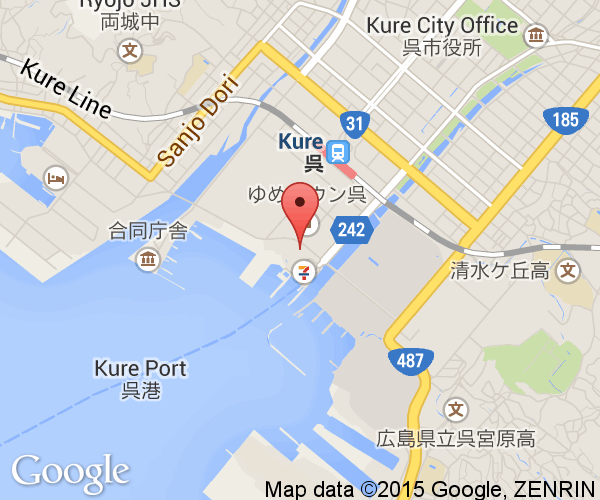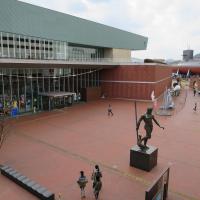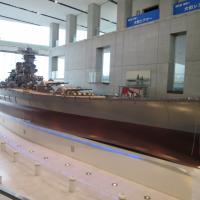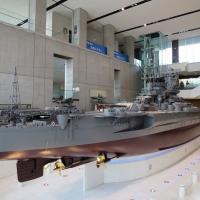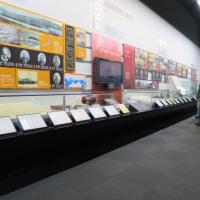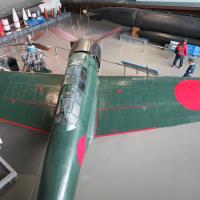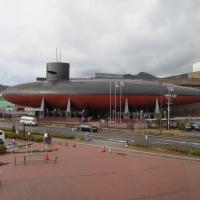Kure City
Yamato Museum
Kure's Yamato Museum (大和ミュージアム) is said to be a tribute to the skills and science of area workers that created such marvels as the Yamato. The Yamato (named after Yamato Prefecture) was the world's largest battleship. The museum's centerpiece is a 1/10 scale reproduction of this battleship.
The museum opened on 2005 and attempts to harness the considerable interest many people have about the ship by creating a world-class museum experience around it. Honoring symbols from Japan's imperialist past is not taken lightly by other Asian countries and many in Japan as well. But, it is a success for the most part. On the other hand, there are some rather rough patches under the glossy displays and the large video walls.
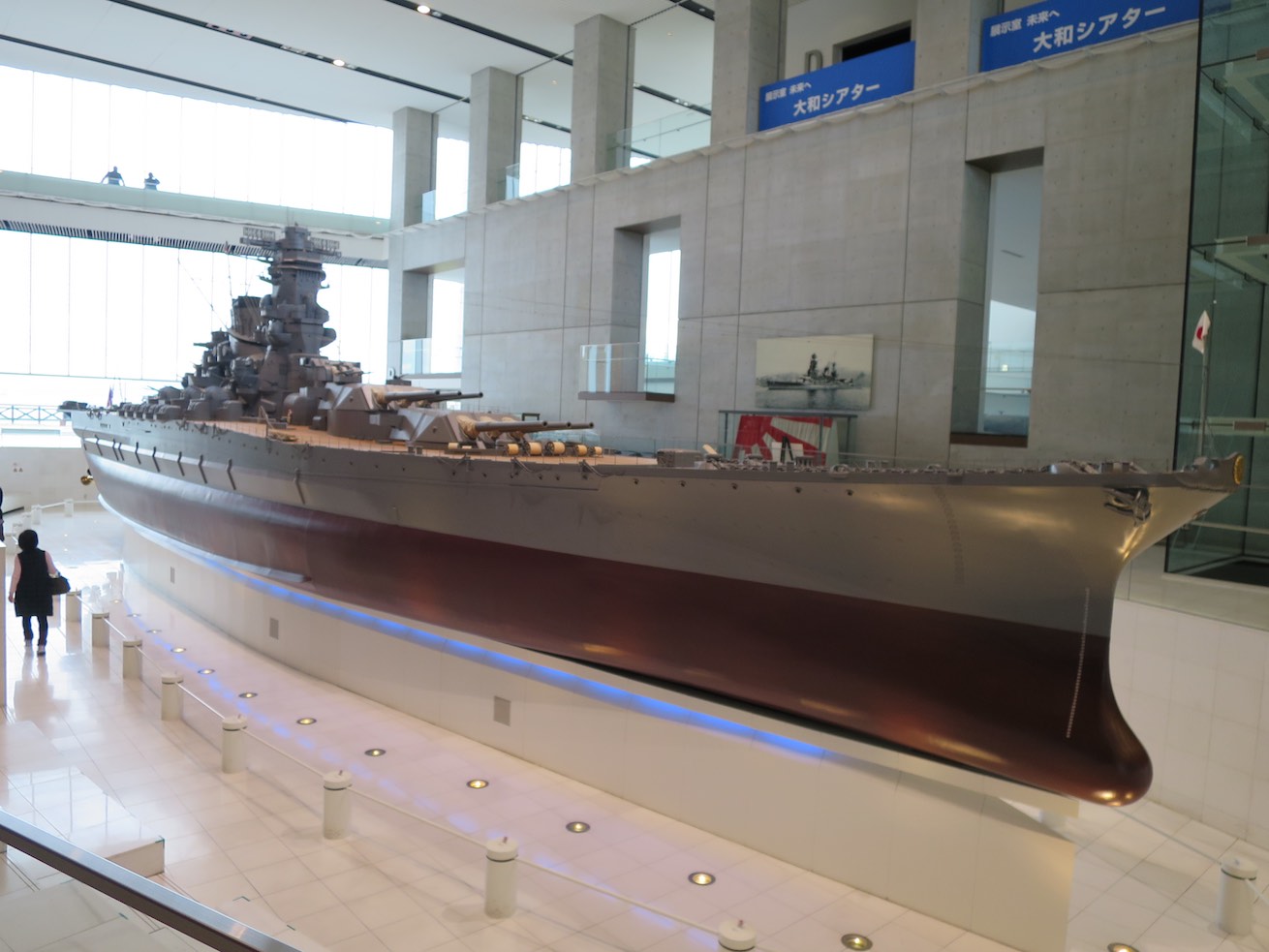
About the Yamato
The museum tour begins as you walk into the area containing the reproduction of the Yamato. The vessel was launched on August 8, 1940 and commissioned on December 16, 1941. Famously, it was sunk by U.S. carrier aircraft soon after on April 7, 1945 during the suicide "Operation Ten-Go" attack on American-held Okinawa. The reproduction may be incredible but one of the museum's poignant displays is that of the handwritten wills of some of the 2,475 sailors who died on the Yamato. Accompanying some of the wills are the laments of loved ones who they left behind.
Military in Kure
The museum's lower left wing mostly chronicles the rise of Kure as a major military port and airbase. Finally, it ends with a displays on the effects of heavy U.S. bombing on the city and war preparations made by civilians. Any and all philosophizing about Japan's many wars is left out. The museum uses a third person view and there might even be more war footage shown on the videos from the American side than the Japanese side.
The history portion ends with displays showing Kure's post-war rebirth as a civilian only ship building port and the rise of Kure as the world leader among of builders of super-tankers. As well, there are displays of local engineering products produced in the Kure region. Amusingly, the display pictures of Kure transportation projects includes a picture of the Akinada Bridge from Kawajiri to Shimokamagari. Both sides weren't part of Kure when it opened in 2000 for another 3 years.
Large Objects Display
In the lower right rooms are a number of a well preserved war period military aircraft, a mini-sub and other items. There's an interesting audio recording from a sailor on a mini-sub as well. The path wraps around and up to the upper floor to give you a good look at them and out on to the Yamato reproduction next door.
Upper Floor
The upper floor has a large open a room containing hands-on displays showing off the science that goes into boats. You can try various different technologies and even try driving a ferry into Kure's port next door. It's all very slick and fun for both kids and adults.
The museum ends with an area dedicated to visions of the future. As part of this, there is a small theatre that shows films. While a somewhat understandable way to cap the museum off, it ends up being rather an aimless and boring section.
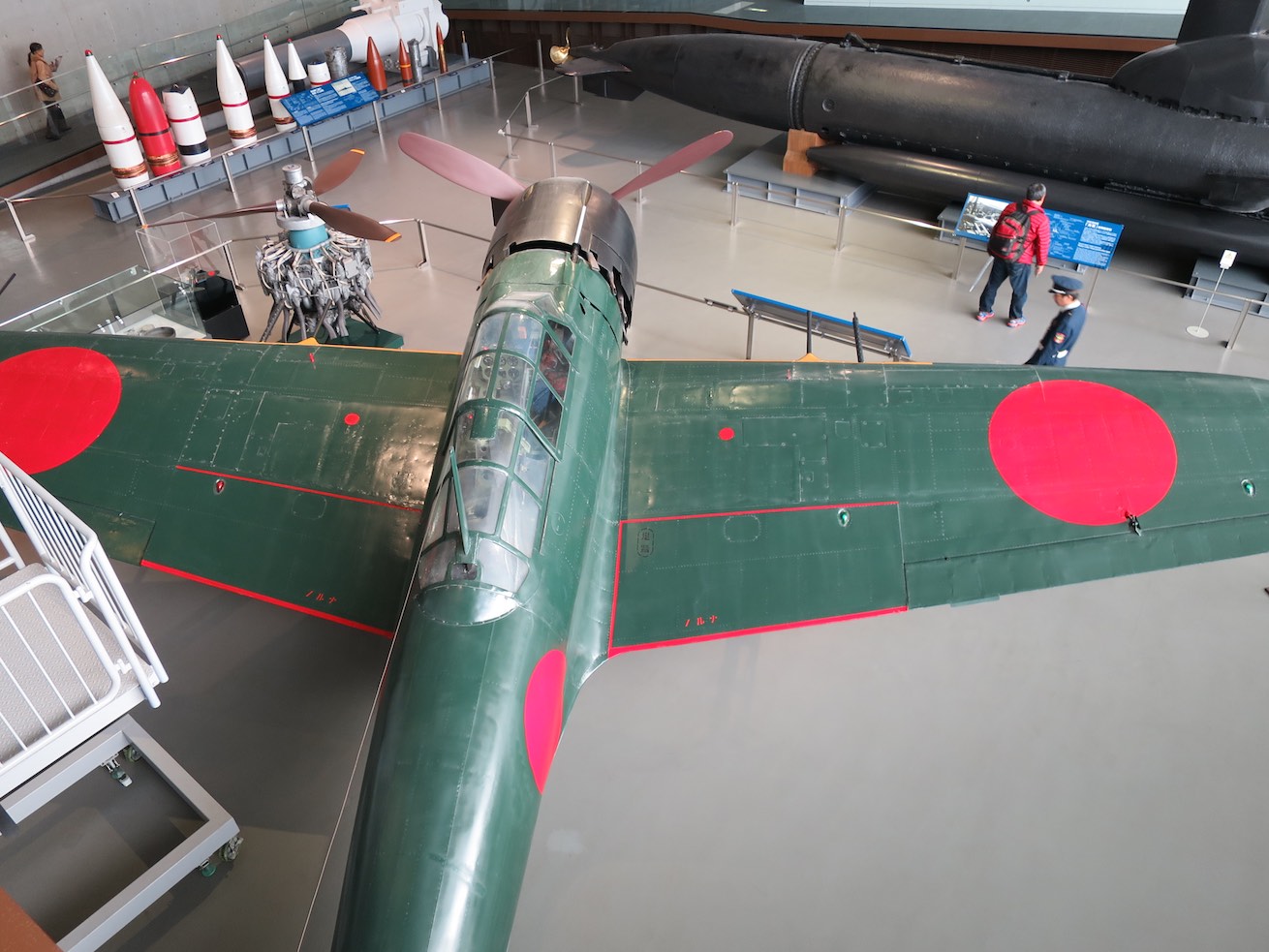
Conclusion
The museum is a world class production. If you're interested in the history of the Japanese military and their ships then this is probably one of the best museums in Japan (certainly the best in western Honshu) to learn about it. The models are excellent. The exhibits like the Zero fighter and human torpedo are amazing to see first hand.
Unfortunately, the museum has plenty of improvements to make if it really wants to make itself accessible to international visitors. Despite flirtations at communication in English, many of the materials fall shamefully short. All artifacts are accompanied by an English title that is rendered too narrow and too small to read easily against glare from the lights. The text in the English pamphlet is awful. An audio guide exists. I've never tried it. Considering that Kure has a large international community, there's no excuse for why so much of English is so terrible.
Getting There
The Yamato Museum is located a short walk from JR Kure Station in Kure City, Japan.
Posted: April 8, 2011 Updated: February 14, 2015
